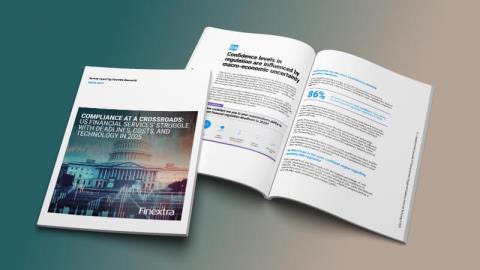The latest survey report by Finextra, which gathered responses from 200 financial services professionals across the US, sheds light on optimism and uncertainty regarding the sector’s regulatory preparedness. Conducted from January 16 to 29, 2025, the survey included insights from C-level executives to senior managers within banks, credit unions, payment service providers, technology providers, and fintech firms, with revenues ranging from under $10 billion to over $250 billion. These findings emerge at a critical juncture following the election of Donald Trump and the delay in new regulatory rulemaking, resulting in increased uncertainty for the US financial sector.
Regulatory confidence amidst a pause
An impressive 96% of respondents expressed either ‘very confident’ or ‘quite confident’ in their ability to meet compliance deadlines in 2025. However, the survey reveals a complicated regulatory landscape. Data security regulations, particularly amid rising cybersecurity concerns, significantly influence financial decision-making across regions. Notably, 26% of banks identified the Bank Data Security Act as the most impactful regulation for 2025, underscoring the urgency of protecting financial data against escalating cyber threats.
Technology adoption: A double-edged sword
The role of technology in ensuring compliance is essential, with 72% of respondents utilizing data analytics and 66% employing AI to meet regulatory requirements. This transition to data-driven decision-making is generally seen as a positive advancement for the industry, as financial institutions strive to streamline compliance efforts.
Nonetheless, the survey reveals notable gaps in the industry’s technological capabilities. Only 3% of respondents reported that their technology stack fully satisfies compliance needs, indicating a major hurdle for financial institutions aiming to stay competitive and compliant in an evolving regulatory atmosphere. Despite the implementation of advanced technologies, data suggests that financial institutions still find it challenging to effectively integrate and utilize these tools for managing compliance risks.
Barriers to compliance: Cost, complexity, and talent shortages
The survey highlights several barriers financial services firms face in achieving compliance. For example, 36% of participants cited the high costs associated with compliance as their primary concern. Almost half (46%) of respondents anticipate spending between 8-10% of their EBITDA on compliance efforts in 2025, indicating that regulatory expenses are becoming a significant financial burden for many organizations.
Furthermore, 25% of respondents pointed out that differentiated compliance requirements pose a considerable challenge, reflecting the complexities of the regulatory environment. With regulatory frameworks in flux, businesses are struggling to align their operations with continuously evolving standards.
Adding to these difficulties is a persistent talent shortage. According to the survey, 50% of organizations are finding it challenging to locate individuals with the necessary expertise and knowledge to navigate the fluid regulatory landscape.
Collaboration and third-party partnerships on the rise
A significant 73% of organizations reported collaborating with third-party vendors or consultants to better manage regulatory changes. This trend indicates a larger shift in the industry towards cooperation, as financial services firms increasingly recognize the need for expert support and additional resources to ensure compliance.
With only 6% of organizations not considering third-party partnerships, the data implies that many institutions are capitalizing on external expertise to overcome compliance hurdles and strengthen their risk management frameworks.
A focus on credit unions and community banks
A standout aspect of the survey is its emphasis on credit unions, often overlooked in financial services research. The survey’s inclusion of diverse credit union responses highlights their vital role in promoting financial inclusion and supporting consumers and small businesses. The insights provided are valuable for both fintechs and traditional financial institutions regarding the influence credit unions exert on the regulatory landscape, particularly through their ties with Community Development Financial Institutions (CDFIs).
Looking ahead: A changing landscape
With regulatory changes looming and ongoing uncertainty regarding the Trump Administration’s approach to deregulation, the financial services sector finds itself at a crucial crossroads. While the industry remains optimistic about meeting compliance deadlines in 2025, the findings highlight the necessity of addressing significant barriers related to costs, technology adoption, and talent acquisition.
As financial institutions adapt to the shifting regulatory environment, their strategies must focus on technology integration, fostering third-party partnerships, and recognizing the unique contributions of credit unions within the financial ecosystem. For many, this will entail reevaluating risk management frameworks and investing in new technologies to successfully navigate the increasingly complex regulatory landscape.
The insights from Finextra’s survey provide a timely roadmap for financial institutions to refine their compliance strategies and better prepare for the challenges ahead in 2025.
Interested in more insights? Download the full report here.
